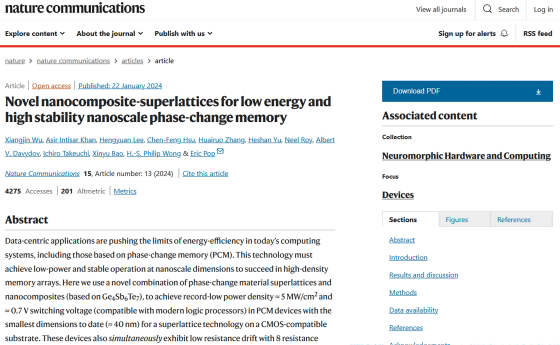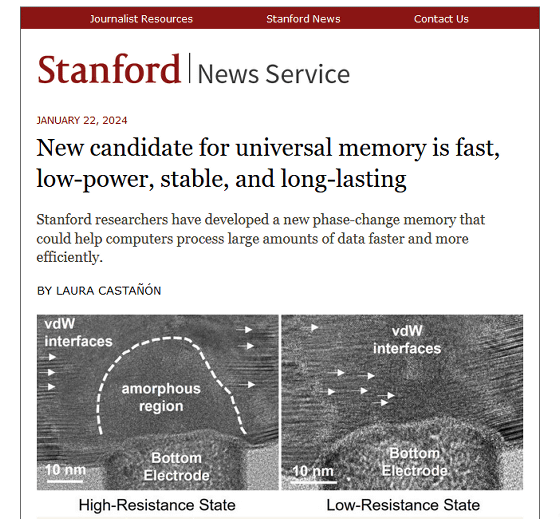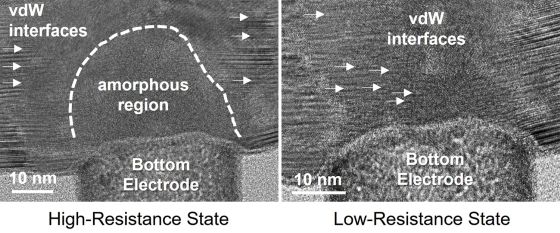It has been revealed that the compound ``GST467'' of germanium, antimony, and tellurium is useful for realizing universal memory that can store data for long periods of time at the same speed as DRAM and VRAM

A research team at Stanford University has discovered that a material called ``GST467'' may be useful in creating ``universal memory'' that combines the advantages of high-speed volatile memory and non-volatile memory that can store data for long periods of time. I did.
Novel nanocomposite-superlattices for low energy and high stability nanoscale phase-change memory | Nature Communications

New candidate for universal memory is fast, low-power, stable, and long-lasting
https://news.stanford.edu/press-releases/2024/01/22/closing-universa-data-processing/

Existing memory is broadly divided into volatile memory used in RAM and VRAM, and non-volatile memory used in SSDs and SD cards. Volatile memory has the characteristic that ``data can be transferred at high speed, but data is lost when the power is turned off.'' There is a characteristic that 'can continue to save'.
Existing PCs and smartphones are equipped with both volatile and non-volatile memory, and it is possible to read data stored in non-volatile memory such as SSD into volatile memory such as RAM, or disconnect the device from power. At times, processes such as 'writing data from volatile memory such as RAM or VRAM to non-volatile memory such as SSD' are executed. However, according to the research team, the time and energy required for communication between volatile memory and nonvolatile memory are too large to ignore. For this reason, the research team worked to develop a ``memory that can transfer data at high speed and retain data even when the power is turned off (universal memory)'' that combines the advantages of both volatile and nonvolatile memory. .
Some memories that combine the advantages of volatile and non-volatile memory have already been commercialized as ``phase change memory (PCRAM)'', but existing PCRAM has the disadvantage of consuming a lot of power. The research team created a memory structure in which GST467, a compound that combines germanium, antimony, and tellurium in a ratio of 4:6:7, is stacked with other materials in layers. We verified that this memory operates at voltages below 1V and has switching times of less than 40 nanoseconds.

According to the research team, memory using GST467 does not have the fastest switching time, but other materials consume significantly more power. The research team claims that GST467 is revolutionary in that it can achieve high-speed and long-term data storage with less than 1 volt of electricity.
Related Posts:
in Hardware, Posted by log1o_hf






